This week get Wyrd Science issues 1-4 for free!
Plus the return of Warhammer 40,000 Rogue Trader, the stylish violence of Gubat Banwa and lots more!
Well, I have to say that I absolutely would not recommend being ill. Still, tempting as it is to stay under the duvet and never leave. we couldn’t leave you without The Gazetteer two weeks in a row and so here we are, sniffles and all.
So, first of all, some possibly exciting news for you as maybe it was the fever but we’ve just made all 4 extant issues of Wyrd Science free to download. Yes, that’s over 400 pages of incredible features, interviews, reviews and more covering games from D&D B/X, Root, Mork Borg and Wanderhome to the likes of ALTNYC88, Campfire and beyond.
Download now from Itch or DriveThruRPG and if you can be bothered maybe throw us a review or mention it online or something. If we’re not going to make any money out of all this, it would be nice to know that it’s at least being read and every little thing helps to spread the word.
If that’s the good news, the bad is that thanks to being sick and a few other painfully boring yet frustratingly complicated admin issues (*cough thank you once again, Brexit cough*) issue 5, which I’d hoped would be dropping through letterboxes this week is, I’m sorry to say, running a tad behind schedule.
Saying that we’re almost there, to the point where it feels a little like I’m trapped in Zeno’s Tortoise paradox, and honestly it’s looking great, so if you haven’t already head here to pre-order a copy and expect that to be with you as soon as is humanly possible (or at least possible for this wretched human).
Right, that’s enough about us, if we haven’t convinced you to buy or download a copy of the mag yet I’m not sure we ever will so instead lets try and convince you to spend some money elsewhere.
This week we look at the unexpected, and very welcome, return of an old favourite, at a new kid on the block that’s serving up a whole lot of South East Asian drama and we have some great stories we found down the back of the internet’s sofa for you to digest, so read on and perhaps even enjoy!
John x
Warhammer 40,000 - Rogue Trader
Catching us slightly by surprise last week was the announcement from Games Workshop that, for an achingly brief window (until November 6), they would be doing a print-on-demand run of the original Warhammer 40,000 - Rogue Trader rulebook. Almost certainly one of the most important tabletop games ever released, 1987’s Rogue Trader ushered in a grim dark future that swept all before it, including its older fantasy sibling, fundamentally changing both wargames and indeed Games Workshop forever.
Still, for all of its subsequent success the first edition of the game is a very strange beast. At first glance much of what we think of as Warhammer 40,000 was there right from the beginning, a surprising amount in fact, but if you first came to the game via any of the later editions large swaths of it, both the setting and system, will have a somewhat uncanny feel.
For a start it was, in many ways, a strange hybrid of wargame and RPG. Whilst Warhammer Fantasy Battle had ditched most of its RPG elements by the release of its 3rd edition, also released in 1987, Rogue Trader still walked a somewhat uneasy path between the two as its lead writer Rick Priestley attempted to combine and distil concepts and ideas that had been knocking around the Citadel offices since the early 80s.

Whilst the version of the game that landed on game stores shelves in 1987 was a far cry from its seemingly Traveller’esque original incarnation, the Rogue Trader we did get was still a game with narrative rather than any kind of competitive play in mind.
Rather than large armies the focus was, at least until the models started selling like hot cakes, much more on squad sized games and more often than not it was assumed that a games master was involved too, responsible for creating interesting scenarios, playing unaligned creatures and even in some cases deciding the composition of the opposing forces.
The game was both incredibly granular, with a vast range of options, such as the 21 different types of grenade available to unique bionic augmentations, but also, and sure to delight many an OSR fan, leaned heavily on random tables for creating everything from unit composition and unique Death Worlds to individual scenarios and campaign plot hooks.
The book also features a bestiary that would put many an RPG to shame with everything from Carnivorous Sand Clams and Gas Fungus to Ptera-Squirrels getting a look in. And if that wasn’t enough included additional rules for creating your own flora, fauna and even sentient planets where every awful, murderous living thing on it shares a collective hive mind.
Elsewhere you’ll find rules for crystal forests, lava flows and boiling mud, cyclones, meteor showers and radiation storms, and at some point it becomes safe to conclude that it’s easier to list what Priestley didn't include in here. With just the barest of work you could use almost all of this to create any number of incredible scenarios, pretty much on the fly, for RPGs like Mothership.
Moreover Rogue Trader is an ocean of possibilities. Compared to almost any successful wargame released since it is remarkably fiddly, excessively detailed, in many ways borderline unplayable and yet remains one of the most inspiring tabletop game books you’ll ever own.
It presents dozens of different directions that wargames could have taken, 95% of which were abandoned with subsequent editions and never picked up again by other games. One of my truest hopes is that an entirely new generation of game designers picks up this book and inspires some of them to explore some of those lesser trod paths.
And we’ve only scratched the surface of what’s in this truly remarkable book. We’ve barely mentioned the Warhammer 40,000 setting itself, presented here in its most anarchic, inchoate form. A glorious mish-mash of Dune, Judge Dredd, Nemesis the Warlock, the Foundation books, Moorcock and anything else that wasn’t nailed down, it was both utterly derivative and yet somehow remarkably fresh.
Subsequent editions would polish away some of the weirder rough edges, leading to an infinitely more marketable if slightly less interesting setting, but 40 years on Games Workshop and Black Library writers are still mining this book for ideas and its easy to see why.
The book is also just a visual feast, the sheer amount of genre defining art that it crams onto every page is frankly astonishing. From that glorious John Sibbick cover art through to illustration after illustration of eerie insect like Eldar, grizzled and truly horrible looking Space Marines, terrifying body horror techno priests, gleefully violent orcs and, of course, photos of all those wonderfully, and incongruously, brightly painted Oldhammer models.
Speaking of actual models you’d be hard pressed to find a Games Workshop book from the past 30 years that devotes as much (or indeed any) space as this does to creating your own flyers, tanks and ruined buildings out of old yoghurt pots, disused plastic glasses and empty deodorant cans. In every conceivable way this is a 280 plus page love letter to creativity and the imagination.
I’ll be honest it would probably take you two minutes to find a PDF of Rogue Trader online, but whilst Games Workshop certainly don’t need your money this really is the kind of book that it pays to be able to pick up and remove yourself to somewhere quiet as you dip in and out of its pages at random and let the spice flow.
And, whilst Rogue Trader is worth a spot in any gaming museum, I hope it’s seen as much more than just a dusty relic to admire or nostalgic ephemera to get misty eyed over. Just as much as I’m excited to get hold of a copy again myself after all these years, I’m equally looking forward to seeing what people who may have never experienced it before both make of and, more importantly, from it.
Whether you’re a wargamer, role-player, fiction writer or you just love to daydream about big, impossibly awful universes you’ll almost certainly find something in here to inspire you for years to come.
Gubat Banwa
The South East Asian RPG community has, of course, been on a tear of late producing some of the most imaginative and important RPG books of the past couple of years. One game that has steadily been building a devoted fanbase has been Joaquin Saavedra’s ‘tactical martial arts fantasy’ Gubat Banwa, which after three years of both public and private development finally arrives on Kickstarter.
Big, brash and bold, Gubat Banwa amplifies the myths and legends of South East Asia, and principally the Philippines, as you play members of a warrior elite, the Kadungganan, to create stories of burning passions, all consuming love, epic heroism and, above all, violence. A whole lot of violence.
Beyond just the joy of seeing South East Asian fantasy settings created by those that have grown up with them, and one that is as unapologetically SE Asian as this, one of the more interesting aspects of Gubat Banwa is how it fits into the relatively small yet increasingly influential school of RPG design looking back at Dungeons & Dragons much maligned 4th edition for inspiration.
The most common complaint against 4E was that its combat especially felt too much like a video game rather than what people then expected from D&D. This led, of course, to an almighty backlash with with D&D losing an unprecedented amount of market share to Pathfinder, and ultimately the abandonment of that edition.
Still I certainly won’t be the first to suggest that had 4E been presented more as an adjunct to D&D, rather than a complete replacement for the previous edition, there’s a good chance it would be looked upon more favourably today. It was after all a great vehicle for the kind of dungeon encounters that are best solved by the introduction of an axe to the head.
Whilst that style might not have been a good fit for what D&D fans wanted at the time, there’s nothing intrinsically wrong with it. Computer games with similar combat systems, like Final Fantasy Tactics, are popular for a reason, and away from video games it can still easily lend itself to powering certain kinds of games, as we’ve seen in recent years with the likes of the celebrated Lancer.
In Gubat Banwa this sees play split into two distinct areas, Drama and Violence. When you’re in Drama mode, things are a lot more free-flowing, this is where the fiction is established, oaths are made, brash promises bellowed and people set themselves, intentionally or not, on the inexorable path to destiny and, almost certainly, violence.
When push comes to shove, and your Kadungganan must square up against some wisecracking fool, the game switches to its Violence mode and, like a gleaming Panaba blade spinning through the air, this is where Gubat Banwa really begins to sing.
Switching to a physical grid, combat in Gubat Banwa has a strong emphasis on three dimensional movement and positioning, with each character having clearly defined and unique abilities. The result is, as the game promises, genuine tactical combat as you make use of the environment and your colleagues to set up unstoppable combos, hurling Killing Storm Blows or Thunder Blasts at any bandit prince stupid enough to get in your way.
It’s over the top, full of drama and thanks to its unique setting feels remarkably fresh and exactly the kind of fantasy I’d love to explore more. So, if you’re looking to delve further into the burgeoning SE Asian RPG scene and like the idea of at least trying to solve all your problems through the stylish application of excessive violence then why not check out Gubat Banwa today.
A collection of other things, both interesting and inspiring, gaming related and not, culled from around the web...
In the latest episode of Cyberpunk today, the dude who tried to kill the Queen with a crossbow was encouraged by his AI chatbot girlfriend…
If our ode to Rogue Trader has you jonesing for more Oldhammer then head over to Tom Evans’ YouTube channel for the first part of his interview with the legend, Rick Priestley looking back over the early years of the fantasy battle game, taking us up to the release of the 3rd edition (for nostalgia reasons our favourite) and what was going on behind the scenes in the business. Really great stuff.
This week sees the publication of Stu Horvath’s new book Monsters, Aliens & Holes In The Ground, a history of roleplaying games from Gygax’s basement through to the zines of today. It is, and I do not say this lightly, a triumph and we have been fortunate enough to be able to feature several excerpts in our new issue.
Anyway Stu is obviously doing the publicity rounds and we were delighted to see him pop up in a slightly unexpected place, The Quietus. Which whilst a favourite haunt of ours (and whom we’ve written for in the past) is normally more where we go to discover new music that sounds like a couple of bricks in a washing machine, so great to see Stu there running through some of his favourite ever games.Looking for some motivation to write yourself a fun little adventure? Well, Emiel Boven is currently hosting a game jam for his small but perfectly formed DURF. Get involved!
We really are living in the past this week. Anyway a lovely bit of old 1980s BBC footage as their South East news team of the day looks into the increasingly popular world of Dungeons & Dragons and speaks to the Games Workshop team, then the game’s European distributor.
Honestly, just incredible amounts to love here - Ian & Steve rolling up to the head office in their red Porsche, Gary Chalk’s taste in shirts, the weird Carlsberg product placement, that general threadbare look that Britain had back then, the late Joe Dever with a touch of a young Garth Merenghi about him, we could go on and on. They even use a RuneQuest pic in the main news studio shot to really annoy the pedants. Just wonderful stuff all round really.What makes a good game? Oxford professor Marcus du Sautoy makes his case in The Guardian ahead of the release of his new book Around the World in 80 Games: A Mathematician Unlocks the Secrets of the Greatest Games.
I was six years old when I first started reading Battle Action strips like Charley’s War, which now that I look back seems pretty wild. I can only presume comics aimed at similar aged kids these days tend to feature less people choking to death on mustard gas in shitty, rat filled trenches.
Anyway, as you would suspect those stories have stayed with me down the years and, despite the debilitating night terrors, I still have a lot of fondness for the comic (and not least because in 1985 they featured my first ever published art and sent me a postal order for £5!).
All of which is to say that were I to be living in the UK right now i’d definitely want to check out the Into Battle: The Art of British War Comics exhibition running at The Soldiers of Oxfordshire Museum until April 30. Read more about it, and see some of the art now, on the BBC News site.Wizards of the Coast’s “year of interesting decisions” carries on with the news they’ve ditched book distributors Penguin Random House for “reasons”, Dicebreaker explain what this might mean.
Finally, let’s give this ursine lasagne larcenist a big hand (paw?), some expert thief skills on display here.




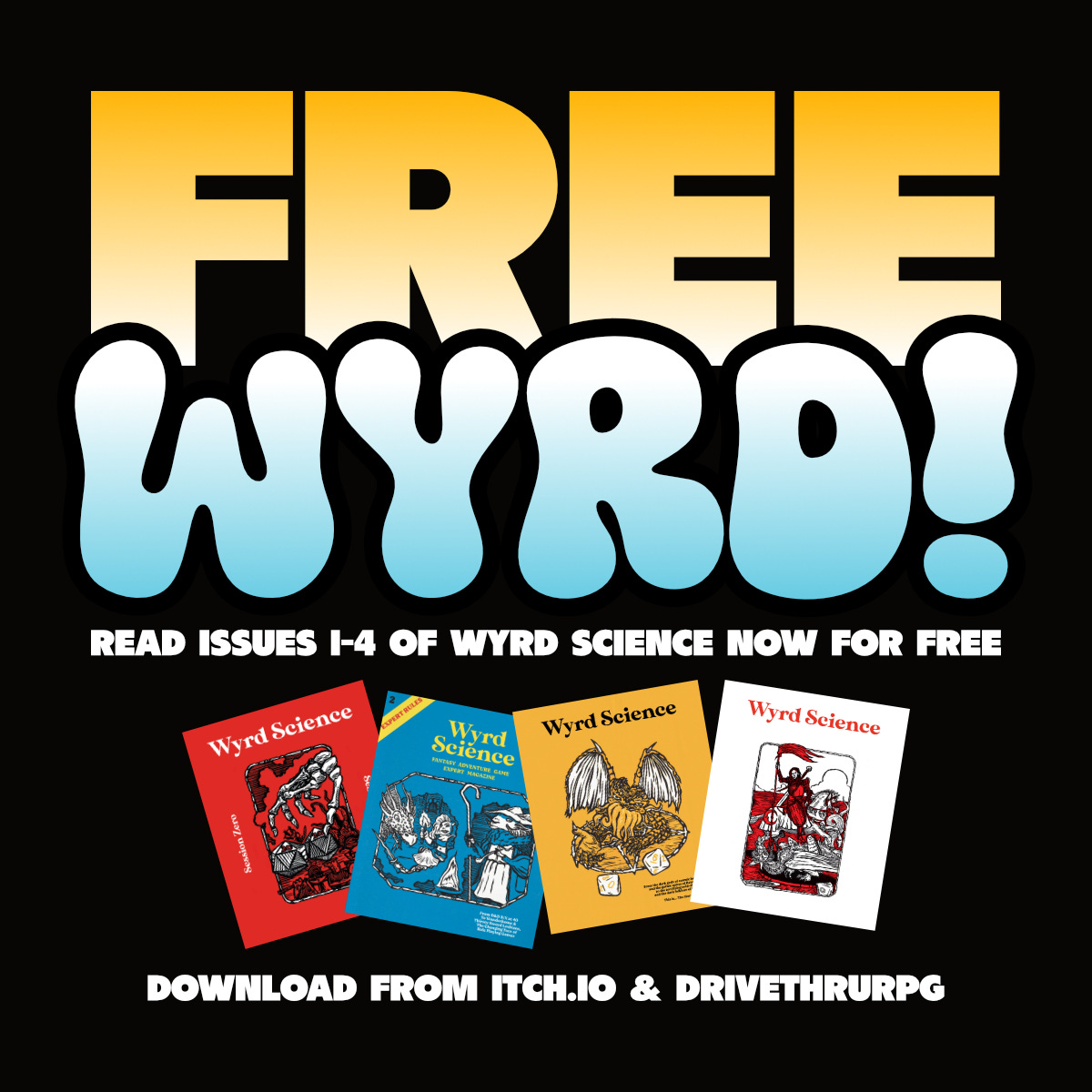
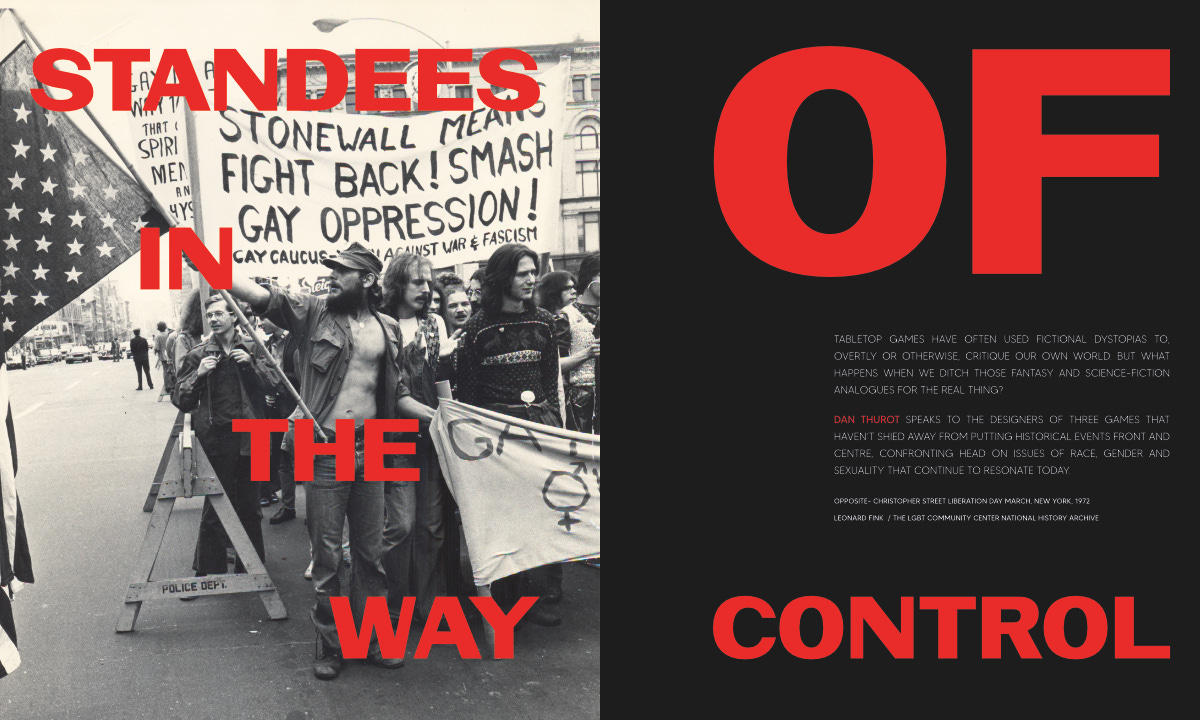


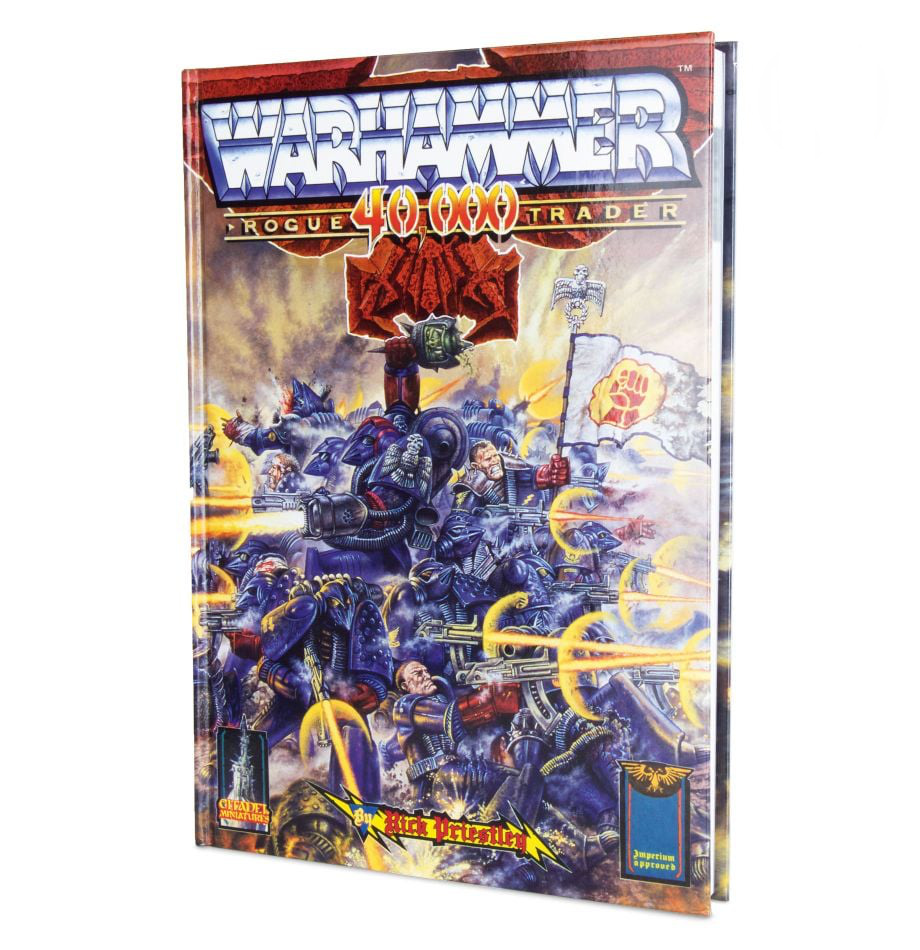



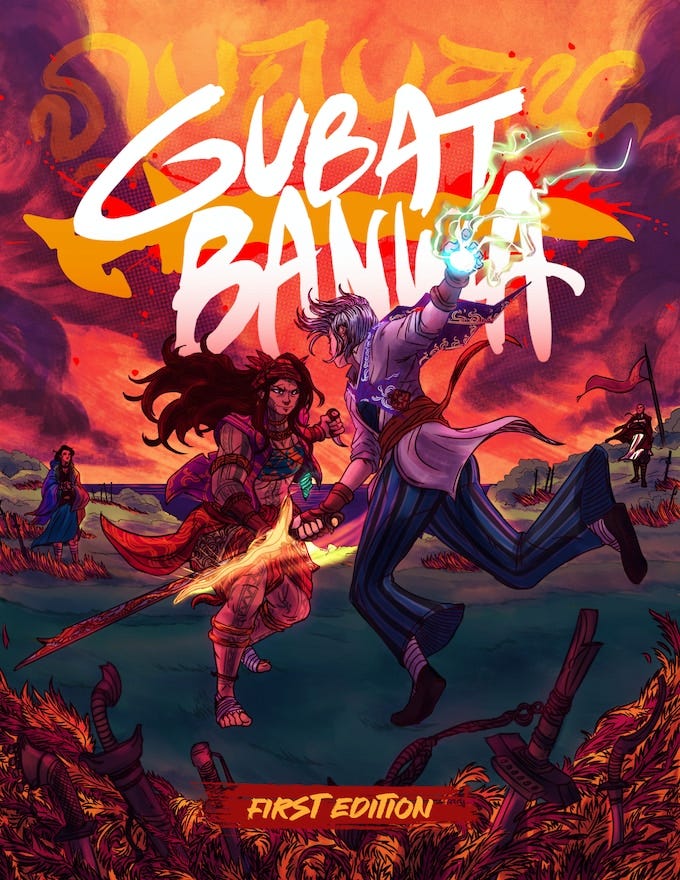
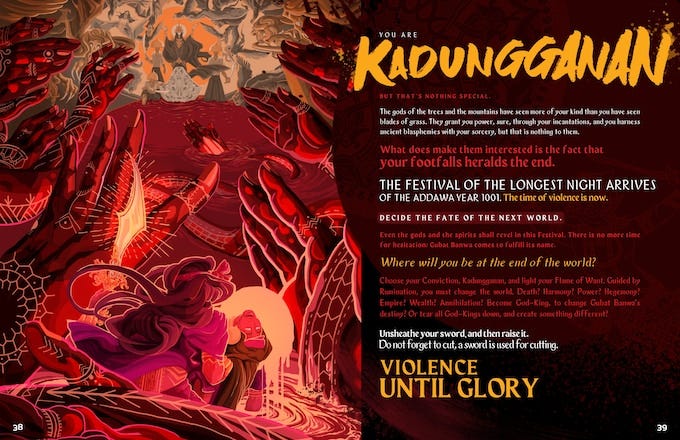
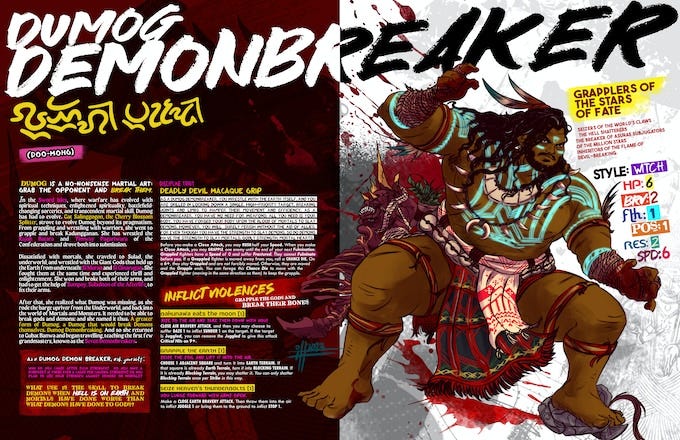


It feels emblematic of the unrestrained ambition in Rogue Trader that it’s intended to be a detailed skirmish game with a dozen or so highly-detailed figures on each side - which also has rules for Defence Lasers intended for use against ships in low orbit.